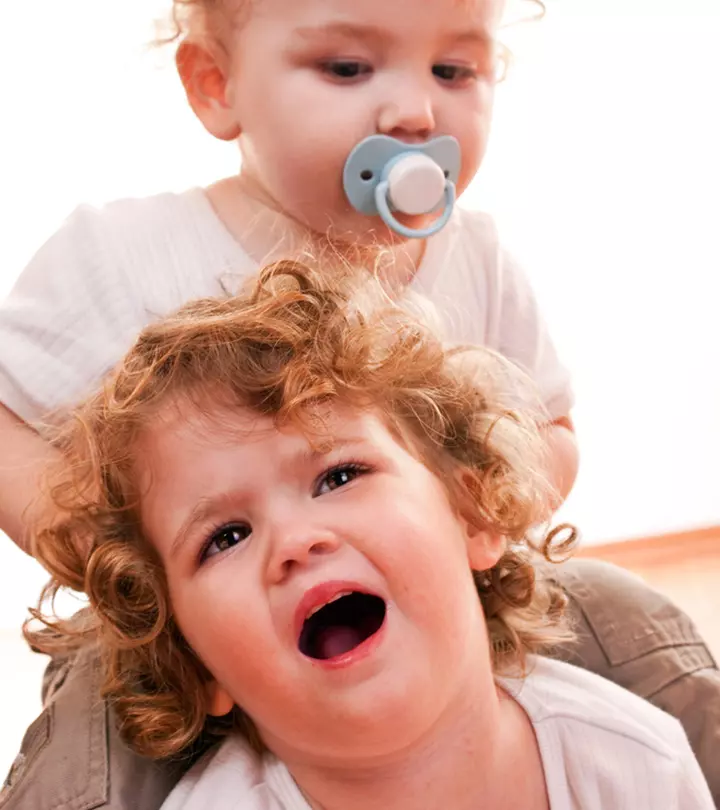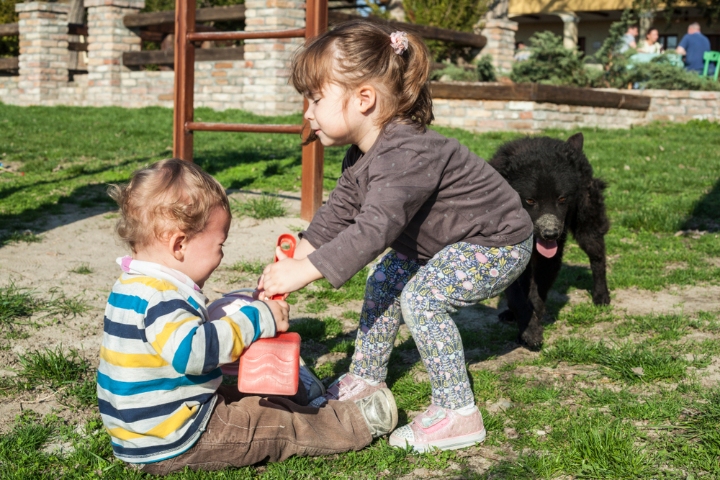
Image: Shutterstock
Being a parent comes with its fair share of challenges, and one of the most daunting situations you might find yourself in is when your toddler starts displaying behaviors that seem, well, a bit bully-like. You’re not alone if you’re wondering if it’s okay to just sit back and watch as your little one acts out. In this article, we’ll explore how to know if your toddler is exhibiting bully-like behavior and why it might be okay to let things pass on their own. Read on to know more!
Understanding Toddler Behavior
First things first, let’s remember that toddlers are like tiny sponges. They soak up the world around them, and sometimes, they might mimic behaviors they’ve seen elsewhere. So, what might look like bullying could simply be your child experimenting with social interactions. It’s essential to distinguish between typical toddler behavior and actual bullying.
Signs Your Toddler Might Be A Bully
Image: Shutterstock
1. Repetitive Aggression
If your toddler constantly engages in physical or verbal aggression towards other kids, it might be a red flag. Frequent hitting, pushing, or name-calling is a cause for concern.
2. Lack Of Empathy
If your child seems indifferent to others’ feelings or shows no remorse after hurting someone, it’s a warning sign.
3. Controlling Behavior
Bullying often involves an element of control. If your toddler is bossy and insists on having their way all the time, it’s something you need to keep an eye on.
4. Exclusion
Deliberately excluding other children from playtime can be a sign of bullying behavior. This is especially concerning if it happens repeatedly.
5. Copying Adult Behavior
If your toddler’s bullying behavior seems to mimic actions they’ve seen in adults, it’s crucial to address the source of these behaviors.
Why It Might Be Okay To Let It Pass
Image: Shutterstock
Before you rush into action, remember that toddlerhood is a period of rapid development, and children are still learning how to navigate the social world. While it’s important to address bullying behavior, there are situations where it might be okay to observe and let things resolve themselves.
1. Developmental Stage
Sometimes, bullying behaviors are part of a developmental phase. Kids may experiment with assertiveness, and as they grow, these behaviors can naturally fade away.
2. Conflict Resolution
Allowing your toddler to resolve conflicts independently can be a valuable life lesson. It helps them learn negotiation, empathy, and understanding.
3. Supervised Observation
While you might not intervene immediately, keeping a watchful eye on them is crucial. Observe your toddler’s interactions with other children to ensure they don’t escalate to harmful levels.
4. Peer Influence
Kids often pick up behaviors from their peers. By giving them the space to figure things out, they might learn from their friends that bullying isn’t the right way to interact.
When To Intervene
Image: Shutterstock
Of course, there are times when doing nothing isn’t the right approach. If you notice that your toddler’s bullying behavior is causing harm or distress to others, it’s time to step in. Here’s when you should consider intervening:
1. Physical Harm
If your child is physically hurting others, such as hitting or biting, it’s necessary to intervene immediately to prevent injuries.
2. Consistent Aggression
If your toddler’s bullying behavior continues over an extended period and causes distress to other children, it’s essential to address it.
3. Adult Models
If you suspect that your child is mimicking harmful behavior they’ve witnessed from adults, it’s crucial to address the root cause and teach them healthier ways to interact with others.
4. Zero Tolerance
Certain actions, like hate speech or severe name-calling, should never be ignored. Intervene immediately and educate your child about the importance of respect.
How To Address Bullying Behavior
Image: Shutterstock
When you do need to step in, it’s essential to address your toddler’s bullying behavior with love, understanding, and patience:
1. Have Open Communication
Talk to your child about their actions, and encourage them to express their feelings. Understanding the root cause of their behavior can be the first step towards change.
2. Teach Empathy
Help your toddler understand how their actions affect others. Use age-appropriate language to convey the importance of kindness and respect.
3. Set Clear Boundaries
Establish rules and boundaries for behavior. Let your child know what is acceptable and what isn’t.
4. Positive Reinforcement
You can consider rewarding and praising your child when they display kind and considerate behavior. Positive reinforcement can be a powerful tool in shaping their actions.
5. Seek Support
If you’re struggling to address your toddler’s bullying behavior, consider seeking professional guidance from a pediatrician or child psychologist. They can provide valuable insights and strategies.
While observing your toddler exhibiting bullying behavior can be disconcerting, it’s crucial to differentiate between developmental phases and persistent bullying. In many cases, allowing your child to learn from their interactions can be an effective approach. However, when necessary, don’t hesitate to step in with love and guidance to help your child grow into a kind and empathetic individual. Remember, you’re not alone in facing these challenges, and with patience and understanding, you can guide your child towards more positive interactions.
















